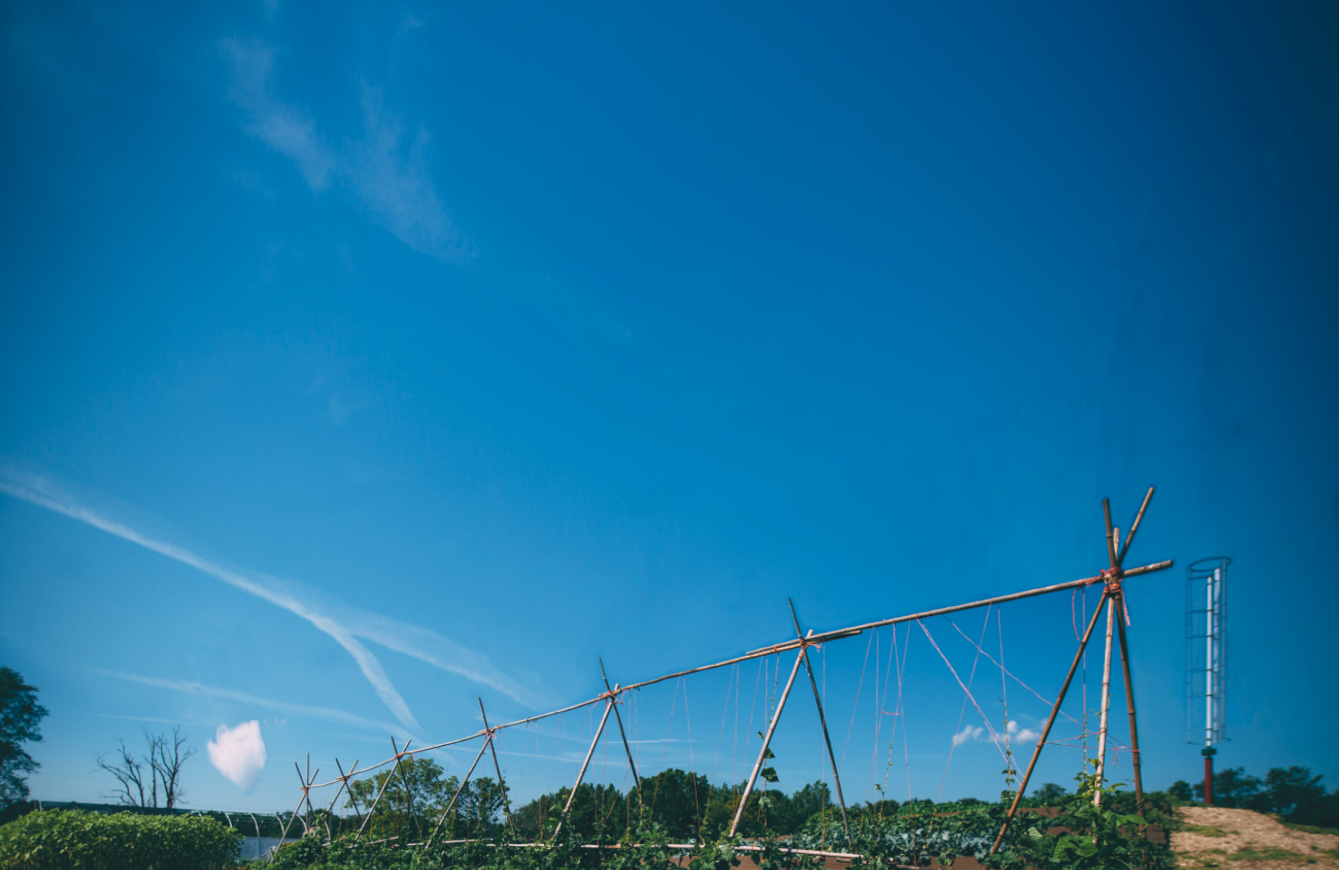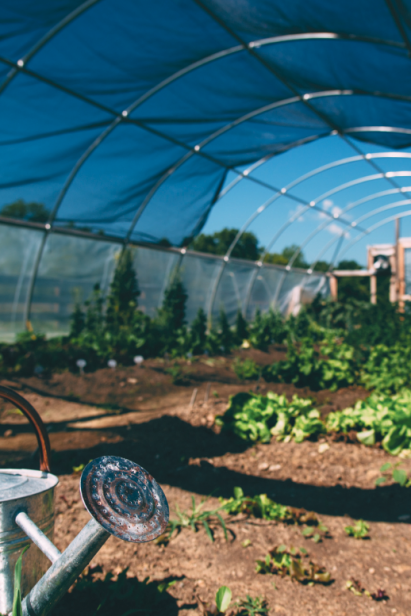Indiana Farmers Harvest the Power of Renewable Energy
Most farmers have a fair idea of how much they spend on heat and electricity but relatively few regularly monitor their total energy consumption. When they look a little closer, many of them start to explore investing in renewable energy.
“Renewable energy” is any naturally occurring, theoretically inexhaustible source of energy that is not derived from fossil or nuclear fuel. These sources include biomass, solar, wind, geothermal, tidal and hydroelectric power. In the past five years, Indiana has made tremendous strides in the use of wind, biofuel, solar and biomass resources. Furthermore, Indiana has used its manufacturing skills to become an integral part of these energy industry supply chains.
Potential savings are greatest in energy-intensive sectors such as pigs, poultry, dairy and those reliant on refrigerated storage but relatively simple measures can be applied on any farm. In fact, improving the energy efficiency of existing buildings, equipment and processes could give a quicker and longer-lasting financial return than any other investment activity, says the U.S. Department of Agriculture.
Renewable Indiana
If the trend of renewable energy sprouting up across the nation’s farms is emblematic of the connection between earth and economy, Fortune Acres, a certified-organic farm in the Traders Point area, is a good example. Sheila Fortune, owner of the 56-acre farm, stands by their commitment “to keep the land as it is, for future generations.” In 2010, she went looking for energy alternatives, and settled on a a low-wind-speed turbine to generate electricity, a geothermal heating system for the barn and a solar fan for the greenhouse.
Electricity generated from renewable sources including hydroelectric power makes up a very small share of Indiana’s total use. Wind continues to be the primary renewable resource for electric power generation in Indiana.
As a whole, Indiana has moderately good potential for solar energy development, particularly in the southern part of the state, which sees on average more than four and a half hours of direct sun per day throughout the year. Indiana’s Solar Thermal Grant program, administered by the Office of Energy Development, has helped fund more than a dozen solar projects in the state, including a water-heating system at Bloomington’s Upland Brewery. The 600-gallon system produces enough hot water for the brewery’s normal kitchen use as well as preheating water for its brewing process, prompting the company to rebrand its signature brew as Helios Pale Ale, after the Greek word for “sun.”
Other renewable energy projects in the state include a geothermal heating and cooling system at Ball State University in Muncie. The university is installing the nation’s largest ground-source geothermal heating and cooling system. The system will replace four aging coalfired boilers and provide renewable power that will heat and cool 47 university buildings. It is estimated that $2 million in operating costs will be saved each year, and that the university’s carbon footprint will be cut in half. The first half of the project was completed in March 2012, and the final half is scheduled for completion in 2015.
The prospective success of renewable power on her farm has made Sheila Fortune a renewable energy advocate.
“Ms. Fortune aspires to be as natural as possible,” said Max Wilkinson, farm manager at Fortune Acres. “We want to use the resources in the ground in every way we can here.”
Wind
Indiana’s first utility-scale wind farm, the Benton County Wind Farm (also called Goodland I), opened in 2008, producing 130 megawatts of electricity per year. Today, Indiana boasts 1,300 megawatts of wind power, enough to provide electricity for 300,000 homes. And there’s an additional 8,000 megawatts wind power in the works.
The local economy is getting a lift from wind energy as well. In 2009, the wind industry supported 3,000 to 4,000 jobs in Indiana. At least 14 facilities in the state manufacture components for the wind industry. Gearbox manufacturer Brevini recently opened a plant in Muncie, despite the economic downturn, and employed 200 people there by 2012, with an ultimate goal of 450 jobs at the facility.
Turbines used to produce electricity from wind can provide a large portion of the average power needs of a farm, however they must be located in high-wind areas and generally require at least one acre of land to produce enough energy. Farmers or ranchers with grazing land in an area with good wind speeds could also consider leasing their land for wind power production to a utility company while still being able to use their land for their animals. For the option of running a system connected to the grid, the land owner must have an average annual wind speed of at least 10 mph. Installing wind turbines is a long-term investment, costing anywhere from $13,000 to $40,000 for a residential wind energy system.
Keep in mind a wind turbine can be a good complement to a photovoltaic (PV) system (see solar) in temperate climates. Wind energy is available when solar energy is not. It is strongest in fall, winter and spring, as well as at night when hot air rises from the earth’s surface, increasing air flow.
The U.S. Department of Energy’s Wind Program and the National Renewable Energy Laboratory (NREL) published a wind resource map for Indiana revealing Central and Southern Indiana farms may not see return on their investment for over a decade, while the northern, especially northwestern, part of the state is “well-suited” for wind development.
Geothermal
While many think of hot springs and natural hot water as the source for geothermal power, there is a source of geothermal power much more commonly available: simply the constant ground temperature. Farm buildings and homes can use geothermal heat pumps to exchange air temperature and ground temperature year round, keeping buildings cool in summer and warm in winter. While geothermal systems are more expensive to purchase and install than a typical fossil-fuel-burning furnace, the return on investment is just five to 10 years. Geothermal systems are best suited for new construction, considering the extensive excavation process involved.
Keep in mind that any renewable energy electric system on the farm can be connected to the utility grid with an inverter, allowing the farm to receive financial incentives for the power it produces. When considering a renewable energy system, check with local laws and ordinances before beginning construction.
Solar
The sun’s energy can be used for heating and cooling greenhouses and water systems, or with photovoltaics it can be used to produce electricity. PV systems can be used to power lighting, electric fencing, small motors and fans, and for pumping water and charging batteries.
Passive solar design can be used to heat and cool greenhouses—a cost-effective option for small growers interested in extending their growing season. A solar greenhouse is highly insulated, uses natural ventilation, and has panels angled to collect maximum solar heat depending on the latitude or location of the greenhouse. Like any major appliance, certified and labeled solar heaters are the most reliable. Consult the Solar Rating and Certification Corporation (SRCC) for certification and rating of solar equipment.
Federal and state programs are playing a critical role in supporting the renewable energy industry, but they are insuffi cient to the long-term task of transforming our energy economy. That will require a set of innovative energy policies in addition to substantial program funding. Indiana could be at the center of a new clean-energy future for America if the right policies are put in place, starting with a national commitment to reduce emissions of global warming pollution, support energy efficiency and advance development of homegrown renewable energy.
STATISTICS
• Indiana is the third-fastest-growing state in wind energy capacity, ranking 11th in the nation. Between 2009 and 2012, the state increased its wind capacity tenfold.
• The 65 megawatts of solar energy currently installed in Indiana ranks the state 20th in the country in installed solar capacity, enough to power 6,900 homes.
• Geothermal resource potential maps for the United States show naturally occurring geothermal resources available and deployed today. (Rankings by state are unavailable.)
• Financial incentive programs are vast but frequently changing, therefore the best way to stay up to date with current programs is to check online resources such as the Database of State Incentives for Renewables and Effi ciency (DSIRE) regularly. For a full listing visit dsireusa.org.
SOURCES
Indiana Office of Energy Development: energy.in.gov
U.S. Department of Energy: energy.gov
Database of State Incentives for Renewables and Efficiency: dsireusa.org
U.S. Energy Information Administration: eia.gov
Natural Resources Defense Council: nrdc.org
U.S. Department of Agriculture: usda.gov
Solar Energy Industries Association: seia.org
Fortune Acres: FortuneAcres.com






